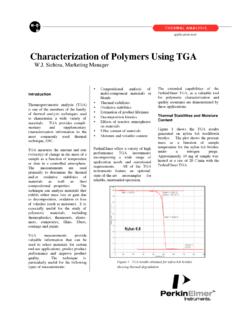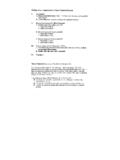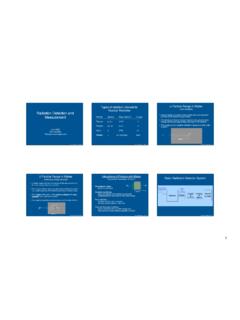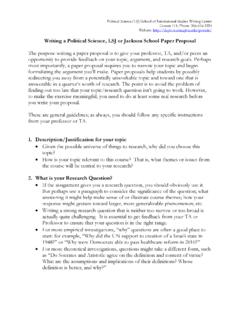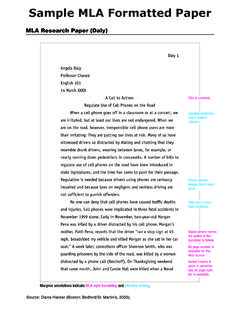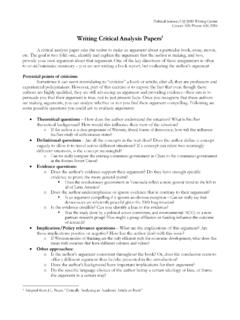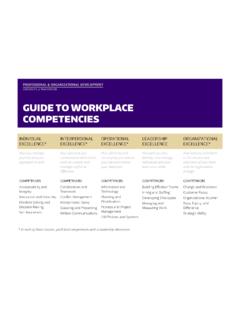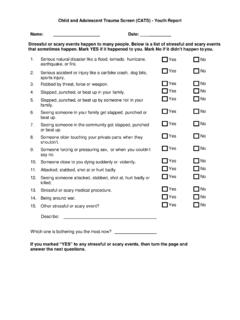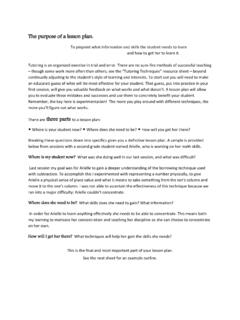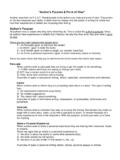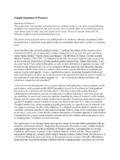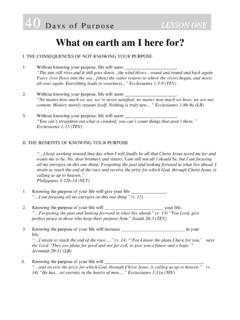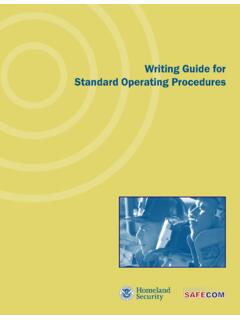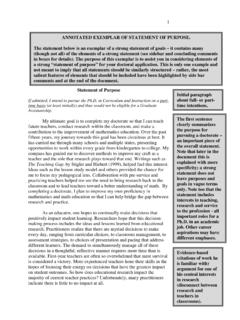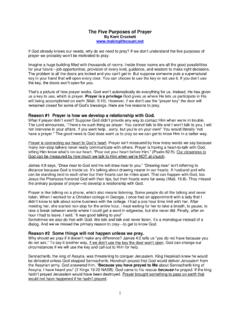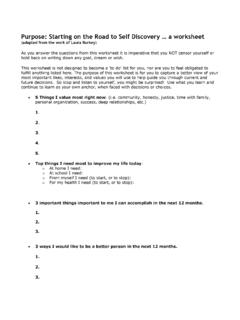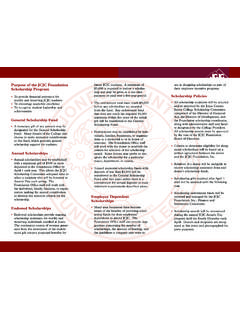Transcription of Paragraph Structure and Purpose - University of Washington
1 Political Science/LSJ/ Jackson School Writing Center Gowen 105, (206)616-3354 Paragraph Structure and Purpose paragraphs are used to help your reader follow the logic of your argument. They should not be too long (generally speaking, paragraphs that are longer than 3/4 of a page are probably too long). When you begin a new idea, a point that contrasts one you were just discussing, or when you are raising a related but separate point, it's probably time to start a new Paragraph . In addition to containing clear, discreet thoughts, a Paragraph should serve a specific Purpose . Ask yourself the following questions: What am I trying to say in this Paragraph ? Am I expanding on a point? Am I qualifying a statement? Here are some suggestions for how to think about what your Paragraph is doing (this list is not exhaustive!): Stating: Making an assertion.
2 Supporting: Providing evidence for an assertion. Concurring: Agreeing with another author's assertion. Qualifying: Restricting the meaning of an assertion already made. Negating: Offering reasoning or evidence to demonstrate the falsehood of an assertion. Expanding: Stating more comprehensively an idea or assertion already expressed. Analyzing: Breaking an assertion down into its constituent parts in order to clarify or evaluate it. Describing: Naming one or more features of an object or concept, to help the reader imagine it precisely or understand it fully. Comparing and contrasting: Examining objects alongside each other for the Purpose of clarifying their features, evaluating them or noting differences and similarities. Evaluating: Making judgment about something discussed previously Synthesizing: Combining elements of previous paragraphs into a coherent whole; often this includes presenting a new perspective on the subject.
3 Summarizing: Restating the principal idea of an argument or point already introduced. Transitioning: Moving from one aspect of the argument to another by connecting the points for the reader.
